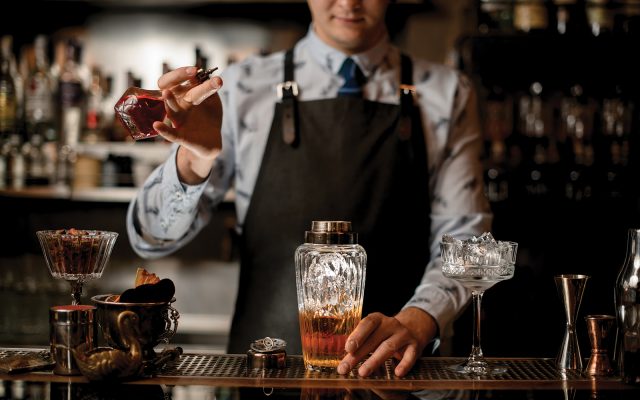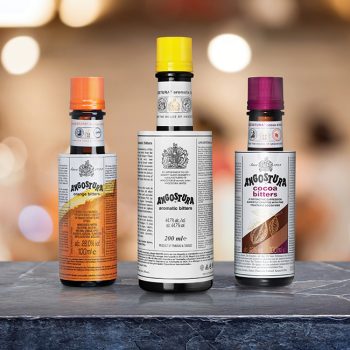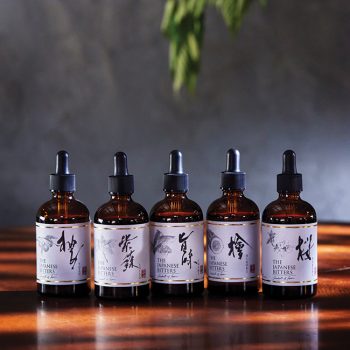A change for the bitters
Having received a real boost during the pandemic when consumers became at-home bartenders, cocktail bitters are capitalising on their popularity by exploring new flavours and opportunities.

*This feature was originally published in the November 2023 issue of The Spirits Business magazine.
As the must-have ingredient for cocktails such as Old Fashioneds and Manhattans, bitters have remained an essential in bars. There are now more options than ever when it comes to flavours, beyond the classic aromatic and orange varieties.
Even consumers are taking their at-home cocktail-making up a notch, a trend that has continued in a post-pandemic world.
According to UK retailer The Whisky Exchange, cocktail bitters have enjoyed an average of 25% growth each year since 2020. The at-home cocktail craze also led to growth in demand for bitters on US alcohol e-commerce platform Drizly in 2020. That year, the bitters subcategory held a 4% share of the ‘extras’ category (which covers everything outside of beer, wine, and spirits) on Drizly, up by two percentage points on 2019’s share. While cocktail bitters’ share dipped to 3% in 2021 and 2022, it remains above 2019 levels at a share of 2.4% in 2023 to date.

The undisputed leader in the category, Angostura Bitters, holds a dominant position in the cocktail bitters category, with an estimated 90% market share, the House of Angostura said. The bitters, which are available in more than 170 countries worldwide, saw exports increase by 2% in 2022, led by the US.
The Trinidad and Tobago-based company, which also produces rum, reported that its sales exceeded US$1 billion in 2022, with bitters accounting for 54% of revenue. Angostura Bitters also climbed by 68% in Latin American markets last year, compared with the previous year.
Sophie Charles-Barber, executive manager – marketing, Angostura, says the company is focusing more on the off-trade and increasing its reach. “We have incredible growing distribution in grocery stores and specialty stores, partnering with the likes of Waitrose and Walmart.”
US-based Hella Cocktail Co, which produces a range of bitters and a canned Bitters & Soda range, has more than 10,000 points of distribution in the US. The products can be found in major grocery chains, as well as Whole Foods and Total Wine.
Stephan Berg, founder of Germany’s The Bitter Truth, has also noticed an acceleration in the off-trade due to the at-home drinking trend. “Covid was supportive in that trend,” he says. “For many years, we have been paving the road to better cocktails at home with our sample-sized Bitters Traveler’s Set and Bitters Bar Pack, each holding five flavours of bitters in a tin box, including a recipe book. These are top-selling items. In the US we also launched a twin pack, holding our two most popular flavours, Old Time Aromatic, and Orange Bitters, each in a smaller size. Our e-commerce orders, via our distributors’ own platform, are always sent out with a free cocktail recipe booklet.”
Similarly, Hella Cocktail Co will sell a pack of its three most popular bitters flavours, Orange, Aromatic, and Mexican Chocolate, online as a bartender’s starter kit.
Biggest sellers

While aromatic and orange remain the biggest sellers for most bitters producers, other companies are seeking to offer regional varieties to drinkers. One example is The Japanese Bitters, founded by Yuki Yamazaki, who recognised a demand for a Japanese-flavoured line after talking to bartenders.
Using Japanese ingredients, the bitters range includes five variants: Umami, Yuzu, Shiso, Hinoki, and Sakura. The range is available in 22 countries, with the US being its biggest market. Yamazaki is planning to release a new flavour, Kunsei (‘smoked’ in Japanese), a smoky version of the brand’s best-selling variant, Umami. Yamazaki says the Sakura (cherry blossom) variant has the most potential in cocktails. “It’s very floral, salty, and can create an umami kind of flavour. It’s sweet and good for Cosmopolitans, G&Ts, Negronis, Old Fashioneds, and Manhattans.”
At the Four Seasons Hotel in Tokyo, the bar’s most popular cocktail, Japanese Martini, uses Yamazaki’s aromatic Kinoki bitters.
Family-run Fee Brothers, based in Rochester, New York, US, offers a range of 21 bitters. As well as the classic flavours, in the past year the company’s range has extended to include more unusual variants, such as the tobacco-free Turkish Tobacco Bitters and the spicy Habanero Bitters. The Turkish Tobacco offers flavours of sun-cured tobacco and hints of coffee, clove, and nutmeg, and can be used in Bourbon cocktails or paired with mezcal, rum, or Cognac. The latest addition will be Mole Bitters, inspired by the spicy Mexican marinade of the same name, which is due to launch on 1 November. Jon Spacher, CEO of Fee Brothers, and fifth-generation descendant of original owner John Fee, said the new additions were created following feedback from distributors and bartenders.
A natural fit
Meanwhile, The Bitter Truth debuted its Black Cherry Bitters at this year’s Bar Convent Berlin show in October. “Cherry is a natural fit for a number of cocktails, and in some areas in North America an Old Fashioned is made with cherries and brandy,” explains Berg. He says the classic flavours (orange, aromatic and chocolate) are still the most sought after but its “relatively new-to-market flavours, like Black Cherry, Cucumber, Olive, Grapefruit, Peach are also seeing steep growth”. He has also noticed a trend for “forgotten and authentic – with a history – flavours. The width of our range, with 13 distinct flavours, always gives us the possibility to cater to regional trends,” he adds. “Moreover, our range is not stagnant. We innovate and bring new flavours to market, yet also delist flavours [such as Tonic Bitters] that may not be that much sought after anymore. We do not want to swamp the market with flavours, but have a relevant range that caters to current day needs.”
Both Angostura and The Japanese Bitters have seen their products being used in food, with the latter being added to sushi, Yamazaki notes.
Meanwhile, Fee Brothers has partnered with distilleries to launch barrel-aged expressions, including ageing its Aromatic bitters in Bourbon barrels from Iron Smoke Distillery in Fairport, New York. In August 2023, the company also teamed up with fellow Rochester producer Black Button Distilling to release a gin barrel-aged Citrus Bitters. Similarly, Hella Cocktail Co collaborated with Canadian whisky brand Crown Royal to launch an Aromatic Bitters aged in whisky barrels for two years.
Broaden the audience
Meanwhile, in 2019 Hella Cocktail Co branched out into the ready-to-drink category with its alcohol-free canned Bitters & Soda range. Tobin Ludwig, chief operating officer, says the bitters-and-soda serve is popular with bartenders who aren’t drinking alcohol. “It was an opportunity for us to broaden the audience in the world of aromatic bitters by making them really more approachable,” he added, while targeting consumers who are focused on health and wellness and interested in the medicinal properties of bitters.
He notes that the canned range sits alongside conventional mixers and tonic waters, cocktail bitters and flavoured sparkling water in health stores. The company recently benefitted from US$5 million support from the Uncle Nearest Fund, and received an undisclosed investment from Diageo-backed incubator Pronghorn.
Could the growth of the ready-to-drink category, driven by bar-quality options and its convenient format, have an impact on the cocktail bitters category as it eliminates the need for multiple ingredients for crafting drinks? Looking at it from his on-trade background, Ludwig says: “I’ve never seen that as a threat to the craft cocktail, made-to-order industry, either behind a bar or at home. And I believe strongly that the ritual of making the drink is a really important part of the experience for people. You want the pleasure of measuring the spirit, dashing the bitters, adding the ice, the juice or the sugar, and so I don’t think it’s threatens that handmade approach.” He called RTDs an “easy solution when you don’t feel like mixing a drink”, but he adds: “They can coexist.”
Angostura has also entered the RTD category in Australia, releasing its bottled Lemon, Lime & Bitters in the market under the Angostura Chill brand.
Bitters in bulk
It is also an avenue being explored by Fee Brothers, which sells its bitters in bulk in a 55-gallon drum for use in RTDs by distillers and other companies.
Ludwig said the company has had to “turn down a lot of opportunities” for making RTDs as it attempts to scale its bitters infrastructure and capability. “We’ve had to choose our brand over being a sub-ingredient in someone else’s product,” Ludwig explains.
But he notes that while creating an RTD with a partner might be an “interesting opportunity”, that it “might not provide a lot of brand awareness because that partner may not always be interested in a co-brand. We’d have to accept the fact that we’re just an ingredient without necessarily the brand name. So where the opportunity gets more intriguing is working with existing partners, where we have a mutual interest in having a co-branded product.”
Related news
Cocktail stories: Speed Bump, Byrdi
